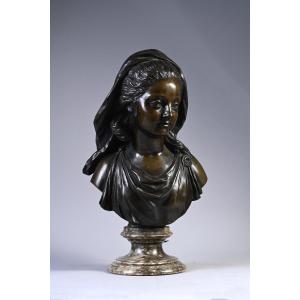Acrylic on canvas
Signed and dated, bears a dedication
On view: 68.5 x 61 cm
This abstract work is distinguished by its fluid forms and dynamic lines. The shapes appear to interact organically, creating movement and depth within the composition.
Stephen Gilbert (1910-2007) was one of the few British artists to fully embrace the avant-garde movement in Paris in the 1950s. He studied architecture at the Slade School of Fine Art in London between 1929 and 1932, where he became friends with Roger Hilton. It was also at this school that he met his wife, sculptor Jocelyn Chewett.
He exhibited at the Royal Academy in 1936 and held his first solo exhibition in London at the Wertheim Gallery in 1938. In 1937, he moved to Paris, where his wife studied with Ossip Zadkine, before finally leaving the city as World War II approached. Medically discharged from military service, he spent the war in Ireland.
After the birth of his daughter Frances, he returned to Paris in 1946. He exhibited at the Salon des Surindépendants in 1948, attracting the attention of Danish artist Asger Jorn, who introduced him to the avant-garde group CoBrA. Along with William Gear, he was one of the only British members of this movement.
Gilbert participated in major exhibitions of the group, such as the Bregnerød Congress in 1949 and the exhibition at the Stedelijk Museum in Amsterdam that same year. After the CoBrA period, which dissolved in 1951, his pictorial approach became more abstract. He exhibited several times at the Salon des Réalités Nouvelles.
In the 1950s, he focused on three-dimensional works and architectural forms, created from aluminum sheets. In 1954, he joined André Bloc's Espace Group and exhibited at the Salon de la Jeune Sculpture. He also became one of the founders of the Néovision group and collaborated with the experimental architect Peter Stead. His work evolved towards more curvilinear forms. In 1962, he received the Calouste Gulbenkian Foundation Prize and the Tokyo Biennale Sculpture Prize in 1965.
After his wife's death in 1979, his sculpture evolved toward more closed structures. In the 1980s, he returned to painting. His canvases can be found in several public collections.






























 Le Magazine de PROANTIC
Le Magazine de PROANTIC TRÉSORS Magazine
TRÉSORS Magazine Rivista Artiquariato
Rivista Artiquariato